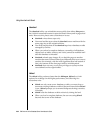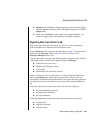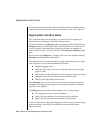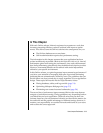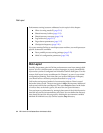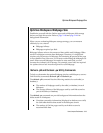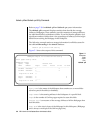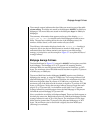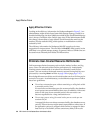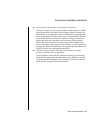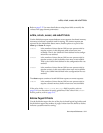
5-4 IBM Informix OnLine Database Server Administrator’s Guide
Disk Layout
Performance-tuning issues are addressed as six topics in this chapter:
■ When is tuning needed? (page 5-10)
■ Shared-memory buffers (page 5-13)
■ Shared-memory resources (page 5-14)
■ Log buffer size (page 5-15)
■ Page-cleaner parameters (page 5-17)
■ Checkpoint frequency (page 5-20)
If you are running OnLine on a multiprocessor machine, two multiprocessor-
specific features are available:
■ Psort parallel-process sorting package (page 5-22)
■ SPINCNT configuration parameter (page 5-24)
Disk Layout
Possibly the greatest gains in OnLine performance accrue from strategic disk
layout. It is not a simple matter to correct improper or poorly planned disk
layout after you have configured and initialized OnLine disk space. For this
reason, disk layout issues are addressed in Chapter 1 as part of your initial
configuration planning. Each time that you create a blobspace or dbspace,
you should review the basic principles described on page 1-43.
OnLine has an improved method of constructing indexes. Data is sorted
before the index is built. The sort uses space in /tmp (all temporary tables and
indexes are build in the root dbspace). The use of /tmp decreases as the index
is built so that, as the index grows, the need for sort space decreases.
You can improve performance by strategic placement of the UNIX directories
that OnLineuses for its intermediate, sort writes. You can define the directory
that should be used for this purpose by defining the environment variable
DBTEMP. If DBTEMP is not set, OnLine uses the /tmp directory.



